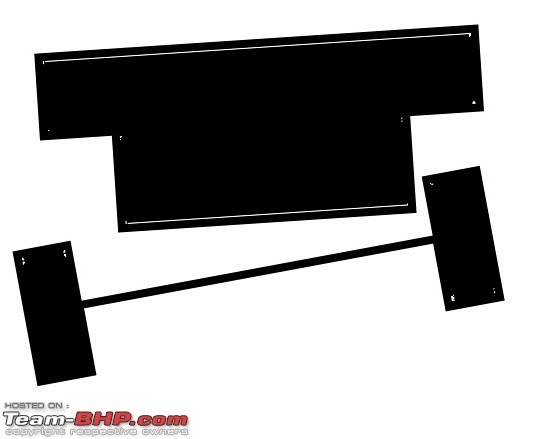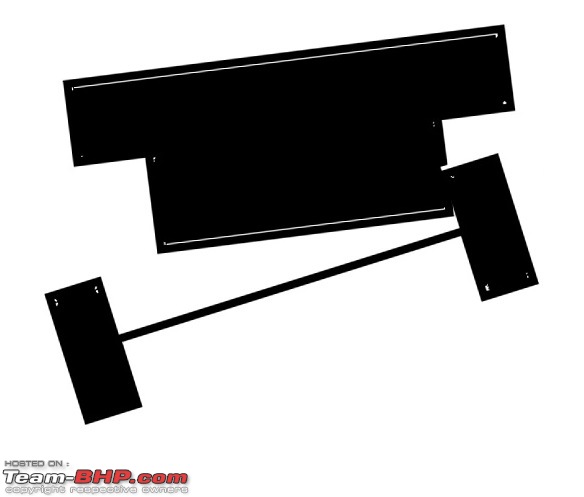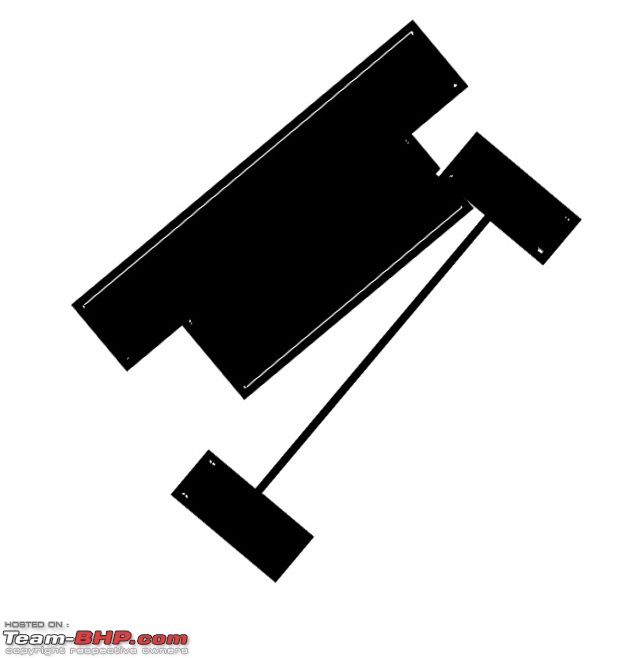Quote:
Originally Posted by SPIKE ARRESTOR  For a layman- There are four forces which play a role here:-
1. Weight of the vehicle
2. Force due to lateral acceleration (read Rolling in off-road parlance)
3. Height of Center of gravity (C.G.)
4. Wheel track
Now can someone tell me if there is any term which mentions about spring and suspension stiffness? NO! So what I had been harping continuously was correct, the graph is wrong. Since no terms related to suspension feature in these equations, there is no relation between Suspension characteristics and the amount of weight transfer when on road and off- road. |
In other words, you just described how a huge piece of brick would behave. You know, a monolith rectangular block.
Quote:
Originally Posted by SPIKE ARRESTOR  This is my last post on this thread, I think I have had enough, no point in breaking my head. I rest my case here. :-) |
Wait, don't walk away. I am not finished yet.

Now, a vehicle is not just a monolith rectangular block. It is a monolith rectangular sprung on two sets of axles, which can move independently up and down when forced. When somebody as strong as Arka presses down on one side of the Jeep, the top part will tilt to that side. How much it will tilt, depends on the softness/hardness of the suspension. My Jeep has much softer suspension, so it will tilt more than the average Jeep. So the tilt depends on the suspension stiffness. When the top part tilts, the CG also shifts to that side to some extent. Ok, depends on the axis of the tilt too. If the axis of the tilt above the CG, the CG will shift to the tilting side. If the CG is below the axis of tilt, I think it remains where it is. Not too sure.
Anyway, let's get some pictures here.
Consider a Jeep standing on flat ground. I haven't shown the leaf-springs, so assume it.

This time let us lift one wheel, so that the axle makes 10 degrees angle against the ground. The near leaf-spring will get compressed and far leaf-spring gets stretched. Therefore the body only makes half as tilt or 5 degree angle against the ground.
Axle at 10 deg, and body at 5 deg. 
Let us further lift it until the tyre fouls the wheel well, say it takes 20 degrees against the ground to achieve it. The body would tilt another 5 degrees. Now we have reached the max articulation.
Axle at 20 deg, and body at 10 deg. 
Let us further lift the wheel, say another 20 degree. This time body will also move as much. After the max articulation point, the entire Jeep acts like a monolith and would move as a single block.
Axle will be at 40 deg, body at 30 deg. 
I hope that explains why latitudinal CG doesn't shift as much as the wheel lift until the max articulation point. After that your brick theory holds good.
As you see, I have not used any formula to explain my thought. This is the best I can do to explain in a layman's words. If you think all the above is pure BS, you don't have to reply.

Quote:
Originally Posted by pjbiju  But once it reaches its limits, then the graph should be linear, as if there was no suspension at all. Does this make sense? |
Call the Y axis as Body Tilt instead of Vehicle lift, then we are in agreement. For me vehicle is not a monolith brick. The sprung body and unsprung wheels/axles can tilt/lift somewhat separately.

 (1)
Thanks
(1)
Thanks














